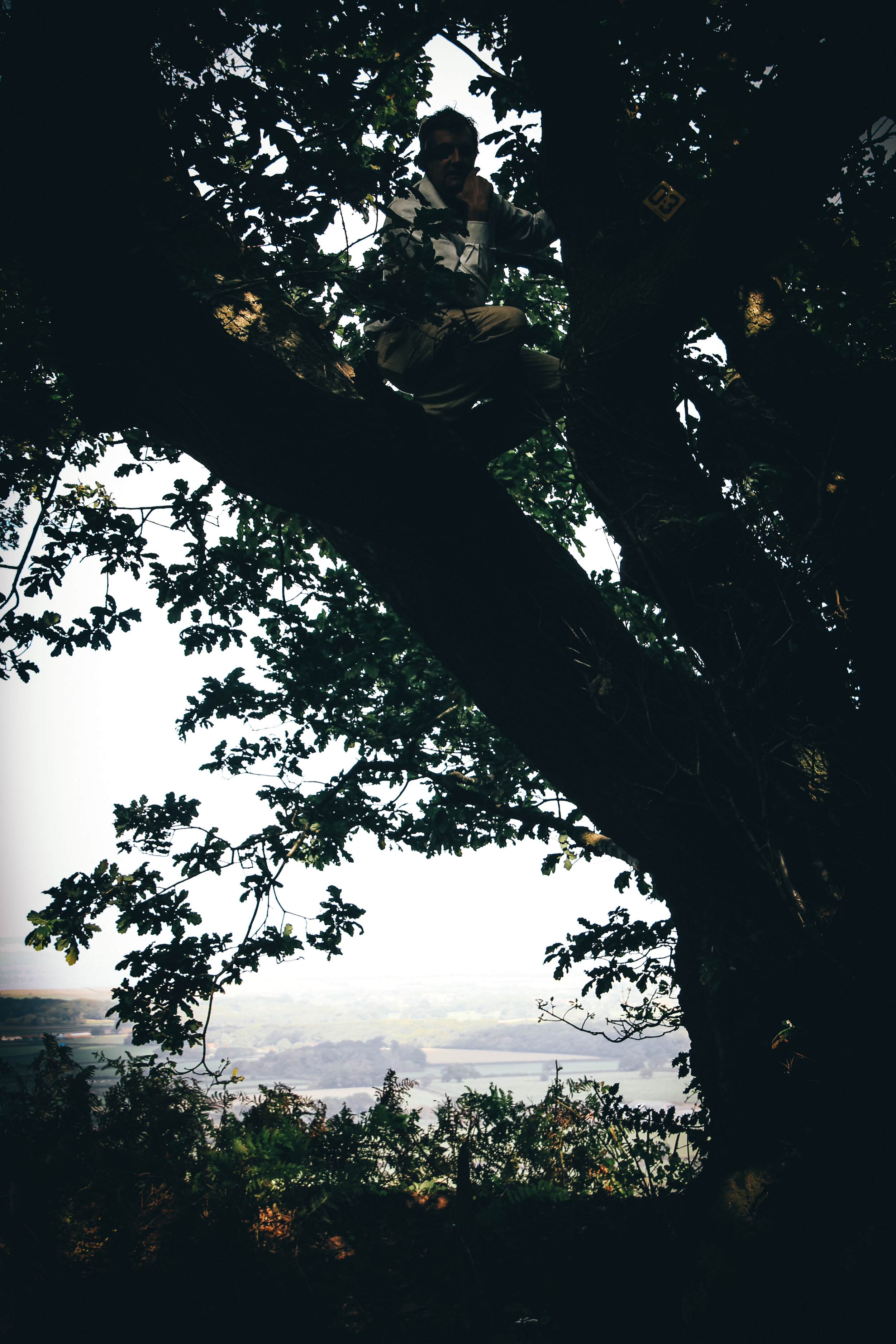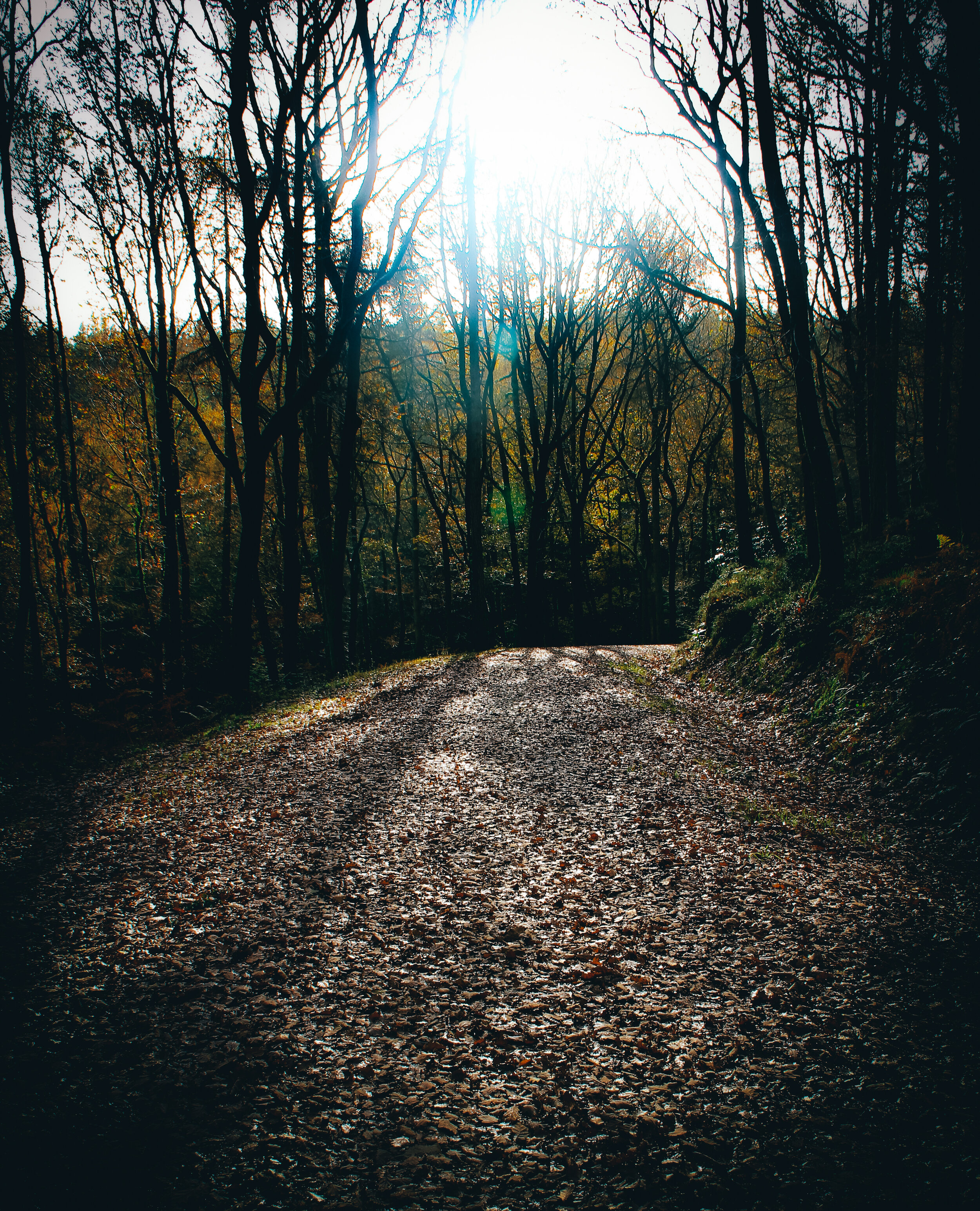Quantock Walks: A Broomsquire Hike
Lane leading to John Walford’s Gibbet
Every now and again we might be lucky enough to go for a walk in a location that has some special meaning for us, and that happened to me a few years ago in one of the most beautiful parts of the Quantock Hills.
I originally did this walk in order to celebrate an anniversary of my novel The Last Broomsquire. The book’s initial publisher James Crowden and poetess Catherine Simmonds - who had both been invited by the National Trust to give readings of their work at the Coleridge Cottage in nearby Nether Stowey - joined me for the hike. The three of us went for a walk in the hills above the village to talk about the Broomsquire story and see the real-life locations where some of it was set.
It was a fascinating excursion for me because Catherine, who helped edit the novel, knows a great deal more about the real story on which I based my 200-year-old tale than I do - which isn’t something you’ll hear many authors say. Anyway, it was such a wonderful hike in such a beauteous place, I have no qualms when it comes to telling you all about it here.
Our aim was to walk in a big loop around Dead Woman’s Ditch and Walford’s Gibbet - both of which are at the epicentre of the novel and, as it happens, of the Quantocks themselves.
The macabre sounding ditch is actually a prehistoric rampart, erected for defensive purposes to help keep the Bronze Age people safe, but Jane Shorney wasn't safe when she passed its way 200 years ago. Actually, I’m not sure how close she was to the ditch which is now so indelibly linked with her passing - local legend has it that she was murdered here but Catherine told me the actual deed was done much further down the hill. However, it was the case that one dark night Shorney’s sharp tongue lashed once too often at Johnny Walford, the handsome father of her children, and he felled her with a single blow before taking out his clasp knife and finishing the job.
The Ordnance Survey map still bears the name Walford’s Gibbet, a mile down the road. That's where he paid the ultimate price for the grim thing that he had done. When Judge Kenyon sentenced Walford more than two centuries ago, he was so overcome with remorse over his own fatal judgment wept - which was not a common thing for one of the old hanging judges of the time. Oddly though, not many people shed a single tear for the woman who lay dead with her throat ripped out up in the hills.
The popular father of her children dangled nearby for a year and a day as an example to others who might think of silencing their wives on a permanent basis. Walford was so good looking in life that it was said by locals that, “He looked better dead after a year and a day than most men do in their prime…”
Walford’s Oak - yes, there is a man in that tree - an ITV reporter when we did a piece about the Broomsquire
That’s the real story, but my novel weaves plenty of fanciful escapades around the colourful character of the young broomsquire. They, by the way, were a strange and long-lost itinerant people who lived on the Quantocks (and elsewhere) and collected broom from which they manufactured besoms - by which I mean the sort of domestic brushes favoured by witches.
So much for all that drama - the best place at which to begin our circular stroll (as is the case with so many of the Quantocks’ best hikes) is Crowcombe Park Gate. You can’t go wrong with Crowcombe Park Gate, no matter in which direction you decide to wander. In this walk we traipse north-east across the flanks of Black Hill to pass Wilmot’s Pool - which used to be called Withyman’s Pool - not that anyone has any idea of who either Mr W was.
From the small hilltop pond we go north again so that we can see Dowsborough directly in front of us. The great green dome looks nothing like any other Quantock hill and I reckon this is the very view which inspired Coleridge’s famous line which starts “sea, hill and wood”. To reach the stately pleasure dome, we take the path which descends deep into Lady’s Combe, which more-or-less separates Dowsborough from the main ridge. From here there’s a track due north around the western, then northern, contours of Dowsborough.
View from Walford’s Oak
The view over the Bristol Channel from here is exceptional. You are treated to an aerial panorama of the seaway’s twin islands – Steep Holm and Flat Holm. By walking around the northern flanks of the huge earthwork which crowns Dowsborough’s wooded summit (which, for the archaeologically inclined, it is an irregularly oval univallate contour hill-fort with counterscarp enclosing seven acres) we were able to descend eastwards through the woods to the aforementioned gibbet where Johnny Walford departed this mortal coil in real life - and may, or may not, have done in my novel.
For some reason I always thought the ancient oak tree on the corner, where the Bin Combe lane makes a tight bend, was the actual place where they stringed Johnny up, but Catherine put me right by telling me the authorities built a gibbet out in the nearby field. It’s all a bit sepulchral and strange - and certainly, it is amazing now to think that this lonesome place once played host to more than 2000 folk who turned up to watch the execution.
From here we made our way up Five Lords Combe - heading west up the contours between what are increasingly low and stunted oaks as Robin Upright’s Hill get higher towards Quantocks’ central ridge. I wish I could tell you who this upstanding person was, but - like Messrs Wilmot and Witchycombe - Mr Upright’s story has been lost in the mysterious mists of Somerset time.
The scrub oaks accompanied us most of the way up the hill and also around its southerly flanks almost to the place where we reached that spooky groove, otherwise known as Dead Woman's Ditch.
From there we returned in the gloaming to the Park Gate by walking west again along the upper edge of forested Rams Combe and then, finally, making a short but gentle ascent up the ridge which plays host to Quantock Hills walking version of Piccadilly Circus. It had been a jolly literary walk with literary friends - but I went home, as I always do when it comes to this part of the Area of Outstanding Natural Beauty, utterly haunted by what was, and what may have been.
Fact File
Basic hike: across the roof of the Quantocks from Crowcombe Park Gate to Dowsborough - down to Walford’s Gibbet - returning via Robin Upright’s Hill and Dead Woman’s Ditch.
Recommended map: Ordnance Survey Explorer 140 Quantock Hills.
Distance and going: four miles – easy going.











